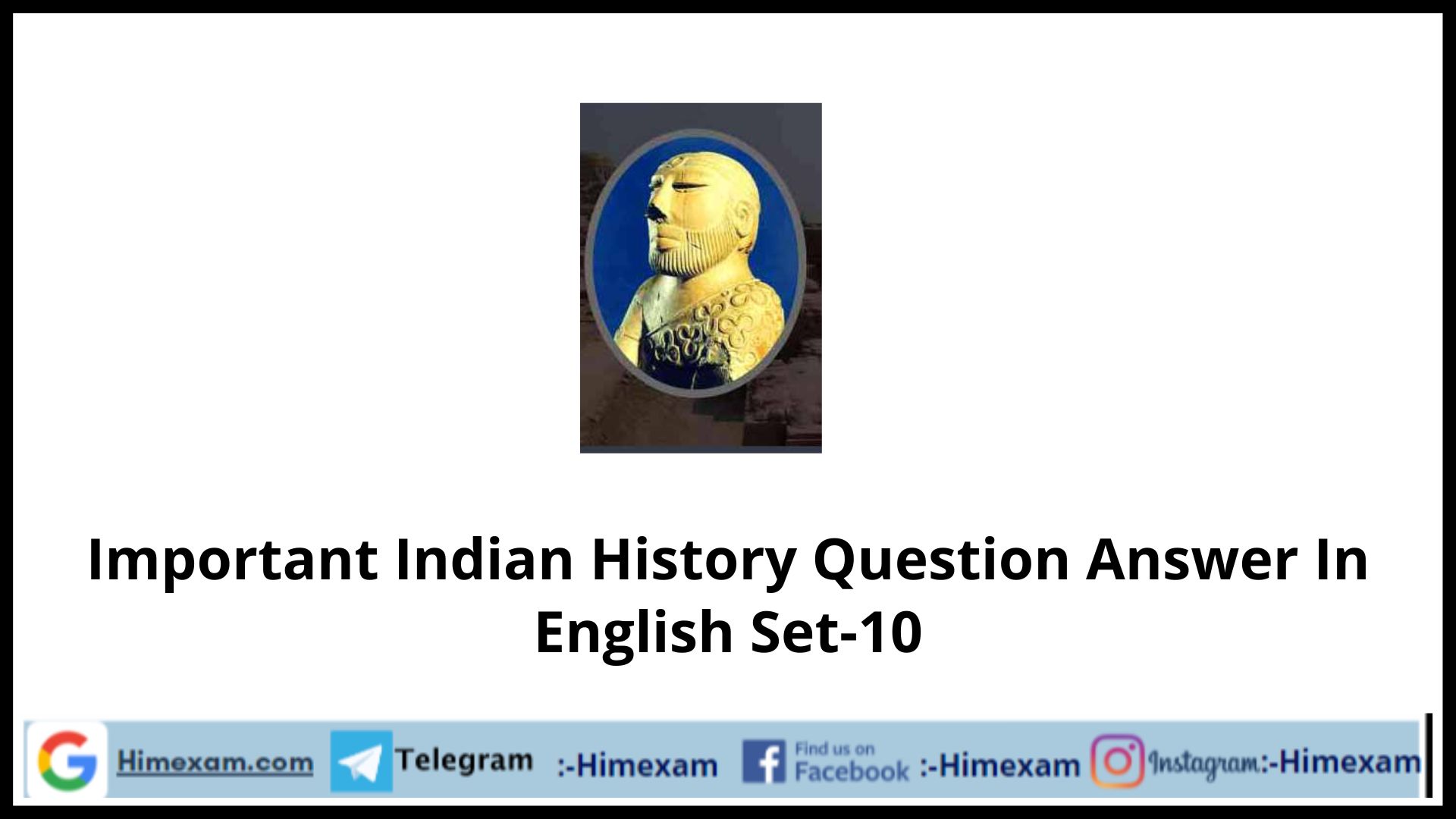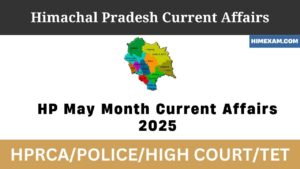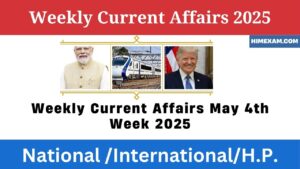Table of Contents
ToggleImportant Indian History Question Answer In English Set-10
||Important Indian History Question Answer In English Set-10||Important Indian History Question Answer for hpssc/hpsssb Set-10||
131. Off the following scholars, who was the first to discover the traces of the Harappan Civilisation?
(A) Sir John Marshall
(B) R. D. Baneji
(C) A. Cunningham
(D) Daya Ram Sahani
Explanation:-The ruins of Harrappa were first described in 1842 by Charles Masson in his Narrative of Various Journeys in Balochistan, Afghanistan. In 1856, General Alexander Cunningham, later director general of the archeological survey of northern India, visited Harappa. In 1872–75 Alexander Cunningham published the first Harappan seal. The excavation campaign under Sir John Hubert Marshall in 1921–22 resulted in the discovery of the civilization at Harappa by Sir John Marshall, Rai Bahadur Daya Ram Sahni and Madho Sarup Vats, and at Mohenjo-daro by Rakhal Das Banerjee, E. J. H. MacKay, and Sir John Marshall
132. “Monolithic Rathas” of the Pallavas are found at
(A) Kanchipuram
(B) Puri
(C) Mahabalipuram
(D) Agra
Explanation:-Mahabalipuram, derived from ‘Mamallapuram’ is the prior and colloquial name of a town in Kancheepuram district in the Indian state of Tamil Nadu, now officially called Mamallapuram. The monuments here are constituted by cave temples, monolithic rathas (chariots), sculpted reliefs and structural temples which are excellent examples of Pallava art
133. The paintings of Ajanta depict the stories of
(A) Ramayana
(B) Mahabharta
(C) Jataka
(D) Panchatantra
Explanation:-The scenes depicted in the Ajanta paintings are mostly didactic, devotional, and ornamental, with scenes from the Jataka stories of the Buddha’s former existences as a bodhisattva), the life of the Gautama Buddha, and those of his veneration. The two most famous individual painted images at Ajanta are the two over-life size figures of the protective bodhisattvas Padmapani and Vajrapani on either side of the entrance to the Buddha shrine on the wall of the rear aisle
134. Which is the port-town of Indus valley civilisation?
(A) Kalibangan
(B) Lothal
(C) Ropar
(D) Mohenjodaro
Explanation:-Lothal is one of the most prominent cities of the ancient Indus valley civilization. It was the most important port of this civilization and was one of the most important centres of export of beads, unguent vessels, chank shells, ladles and inlays. Lothal engineers accorded high priority to the creation of a dockyard and a warehouse to serve the purposes of naval trade.
135. Poet Kalidasa lived in the court of
(A) Chandragupta Maurya
(B) Samudragupta
(C) Chandragupta Vikramaditya
(D) Harsha
Explanation:-Kalidasa is generally associated with Chandragupta II who was one of the most powerful emperors of the Gupta empire in northern India. It was during his reign that the Gupta Empire achieved its zenith, art, architecture, and sculpture flourished, and the cultural development of ancient India reached its climax. Culturally, the reign of Chandragupta II marked a Golden Age. This is evidenced by later reports of the presence of a circle of poets known as the Nine Gems in his court. The greatest among them was Kalidasa.
136. Which was the oldest University?
(A) Gandhara
(B) Kanauj
(C) Nalanda
(D) Vaishali
Explanation:-Nalanda was an ancient center of higher learning in Bihar which was a religious center of learning from the fifth or sixth century CE to 1197 CE. At its peak, the university attracted scholars and students from as far away as Tibet, China, Greece, and Persia. Nalanda was ransacked and destroyed by an army under Bakhtiyar Khilji in 1193.
137. Who is called as the ‘Second Ashoka’?
(A) Samudra Gupta
(B) Chandra Gupta Maurya
(C) Kanishka
(D) Harshavardhana
Explanation:-Kanishka worked for preaching of Buddhism. He spread Buddhism to China, Japan, Central Asia and Tibet; and convened the 4th Buddhist Council at Kundalvana in Kashmir. Due to his works he is often called ‘Second Asoka’
138. The famous Kailasanath Temple at Kanchi was built by—
(A) Mahendravarman I
(B) Narasimhavarman II
(C) Nandivarman II
(D) Dantivarman
Explanation:-The Kailasanath temple is the oldest temple of Kanchipuram. It was built by the Pallavas in the early 8th century CE. This temple was built by Pallava King Narasimhavarman II (Rajasimhan), and is also called Rajasimha Pallaveswaram.
139. Kalibangan is situated in
(A) Uttar Pradesh
(B) Sindh
(C) Rajasthan
(D) Gujarat
Explanation:-Kalibangan is a town located on the left or southern banks of the Ghaggar (Ghaggar-Hakra River), identified by some scholars with Sarasvati River in Tehsil Pilibangan, between Suratgarh and Hanumangarh in Hanumangarh district, Rajasthan, near Bikaner. It was a major provincial capital of the Indus Valley Civilization. Kalibangan is distinguished by its unique fire altars and “world’s earliest attested ploughed field.”
140. Bindusara sent Asoka to quell the rebellion in—
(A) Swarnagiri
(B) Taxila
(C) Ujjain
(D) Tosali
Explanation:-Because of his reputation as a frightening warrior and a heartless general, Ashoka was sent by Bindusara to curb the riots in the Avanti province (Ujjain) of the Mauryan empire. The Buddhist text Divyavadana talks of Ashoka putting down a revolt due to activities of wicked ministers. He was twice to pacify the Taxilans.
Join Our Telegram Group :- Himexam









